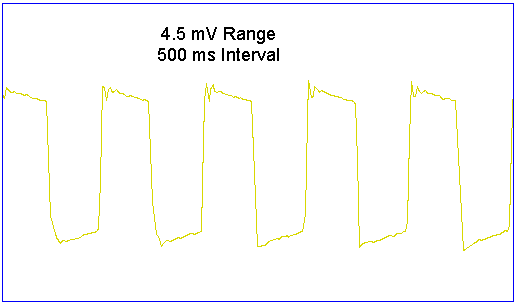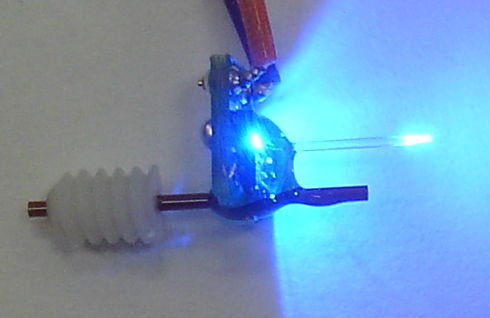The A3030D divides each pulse interval into thirty-two sections. For regular pulses, the A3030D always initiates a pulse in the first section and only in the first section. For random pulses, the A3030D initiates a pulse in each section with probability 1/32. Thus the average period of pulse initiation is the same as the interval length. With pulses longer than one section length, the pulses overlap. Pulses that occur at the end of an interval can overlap pulses occurring at the beginning of the next interval.
With 2-s intervals and 100-ms pulses, we counted 100 pulses in 207 s. With 100-ms interval and 10-ms pulses, we used a recording of lamp modulation noise to count 559 pulses in 60 s. The figure below shows the distribution of the number of pulses we counted per one-second recording interval.

Figure: Distribution of Pulses per Second for Random 10-ms Pulses with 100-ms Interval. Average pulse rate is 9.3 pulses/s. For 32-s view of recording and spectrum, see here.
We appear to have a passable approximation to a Poisson distribution of pulse generation. When the pulse length is significant compared to the interval length, the average number of pulses drops because the pulses are overlapping. But we still get 9.3 pulses/s average for 10-ms pulses at 10 Hz.
NOTE: The ISL6 accepted the interval length in multiples of 30.5 μs rather than 1 ms, so the ISL Controller Tool 4.1 has a version selector that allows it to control both ISL6 and ISL7 devices.


